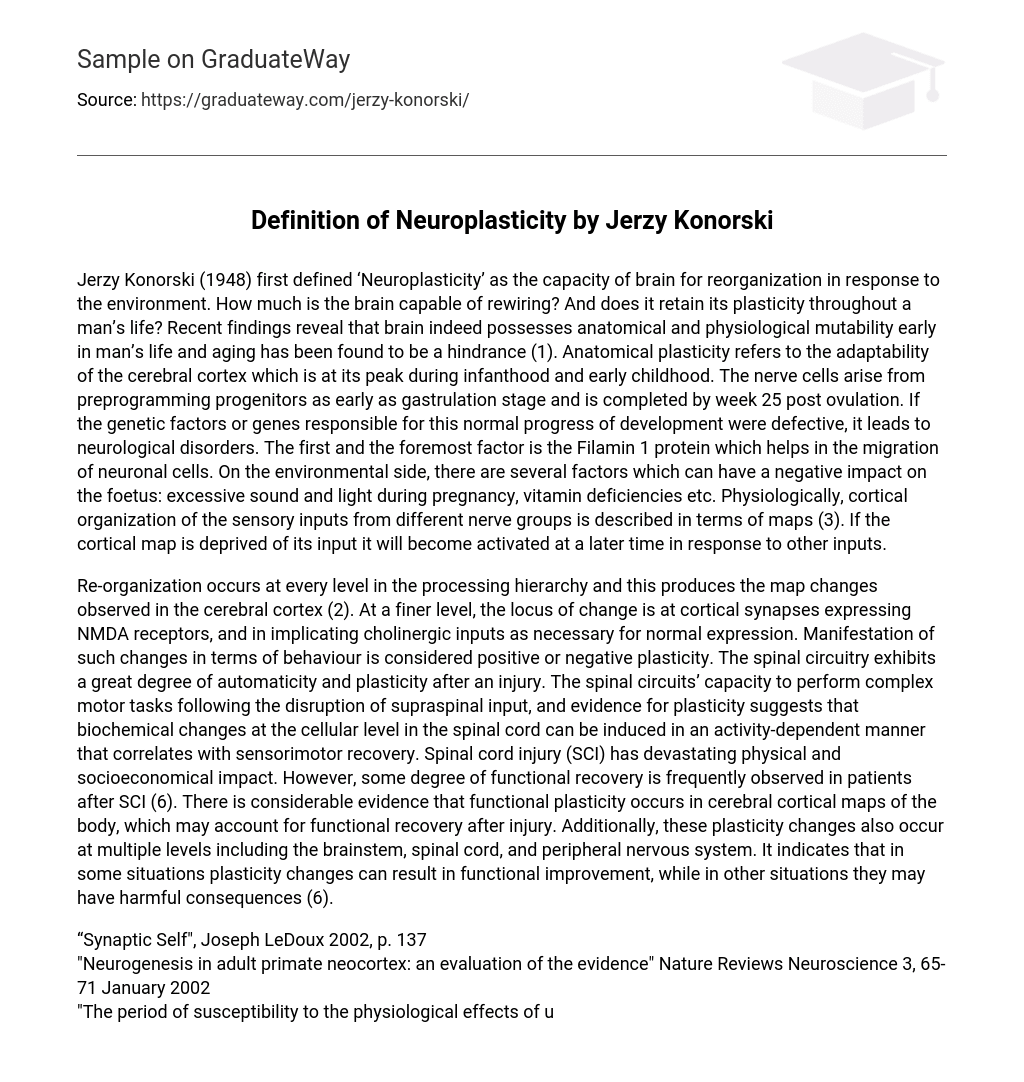Jerzy Konorski (1948) first defined ‘Neuroplasticity’ as the capacity of brain for reorganization in response to the environment. How much is the brain capable of rewiring? And does it retain its plasticity throughout a man’s life? Recent findings reveal that brain indeed possesses anatomical and physiological mutability early in man’s life and aging has been found to be a hindrance (1). Anatomical plasticity refers to the adaptability of the cerebral cortex which is at its peak during infanthood and early childhood. The nerve cells arise from preprogramming progenitors as early as gastrulation stage and is completed by week 25 post ovulation. If the genetic factors or genes responsible for this normal progress of development were defective, it leads to neurological disorders. The first and the foremost factor is the Filamin 1 protein which helps in the migration of neuronal cells. On the environmental side, there are several factors which can have a negative impact on the foetus: excessive sound and light during pregnancy, vitamin deficiencies etc. Physiologically, cortical organization of the sensory inputs from different nerve groups is described in terms of maps (3). If the cortical map is deprived of its input it will become activated at a later time in response to other inputs.
Re-organization occurs at every level in the processing hierarchy and this produces the map changes observed in the cerebral cortex (2). At a finer level, the locus of change is at cortical synapses expressing NMDA receptors, and in implicating cholinergic inputs as necessary for normal expression. Manifestation of such changes in terms of behaviour is considered positive or negative plasticity. The spinal circuitry exhibits a great degree of automaticity and plasticity after an injury. The spinal circuits’ capacity to perform complex motor tasks following the disruption of supraspinal input, and evidence for plasticity suggests that biochemical changes at the cellular level in the spinal cord can be induced in an activity-dependent manner that correlates with sensorimotor recovery. Spinal cord injury (SCI) has devastating physical and socioeconomical impact. However, some degree of functional recovery is frequently observed in patients after SCI (6). There is considerable evidence that functional plasticity occurs in cerebral cortical maps of the body, which may account for functional recovery after injury. Additionally, these plasticity changes also occur at multiple levels including the brainstem, spinal cord, and peripheral nervous system. It indicates that in some situations plasticity changes can result in functional improvement, while in other situations they may have harmful consequences (6).
“Synaptic Self”, Joseph LeDoux 2002, p. 137
“Neurogenesis in adult primate neocortex: an evaluation of the evidence” Nature Reviews Neuroscience 3, 65-71 January 2002
“The period of susceptibility to the physiological effects of unilateral eye closure in kittens”J Physiol Vol 206 1970, Issue 2 pp 419-436
Ponti et al. Genesis of Neuronal and Glial Progenitors in the Cerebellar Cortex of Peripuberal and Adult Rabbits. PLoS ONE, 2008; 3 (6): e2366 DOI: al.pone.0002366
Doidge, Norman. The Brain that Changes Itself. Viking, 2007, p. xv.
CORTICAL PLASTICITY: From Synapses to Maps DV Buonomano, MM Merzenich – Annual Review of Neuroscience, 1998





